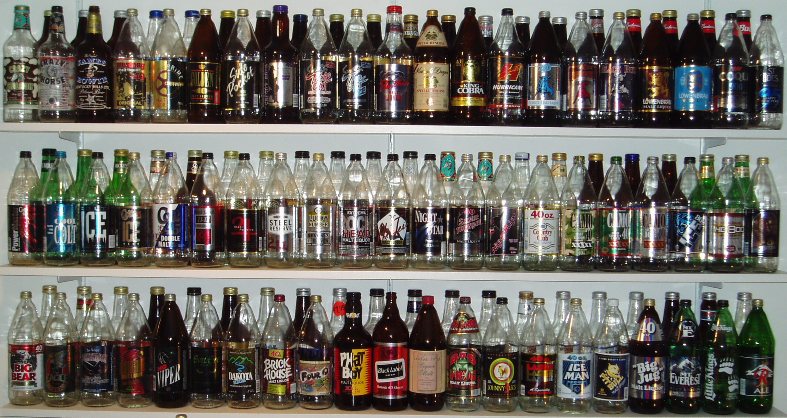scottlindner
Well-Known Member
I recently brewed a malt liquor that resulted in a poor attenuation. I'm not sure if the yeasties pooped out, poor yeast strain selection, or if it was a problem during the mash.
Here's the details:
34% 2 row
37% 6-row
29% flaked maize
Mash temp ~151F
OG = 1.057
WLP810 San Fransisco Lager
Primary temp ~68F
When I racked to secondary after two weeks in primary the gravity was 1.026. I had saved some WYeast 1056 from another brew and put that in the secondary to help it out. I figured both are clean yeasts and most of the fermentation already happened with the lager yeast so it wouldn't give the beer an ale flavor. After a month in secondary the FG is at 1.022.
We tasted a sample. It is going to be a superb malt liquor, but it's a little sweet. I had hoped to get in the 1.012 to 1.015 range to keep it dryer.
I have never brewed with corn before and I have never attempted a lager before. I don't have anyway to hold a lager temp so I picked a strain that was effective has high as I could find. Any thoughts regarding the cause of the higher than desired FG?
Scott
Here's the details:
34% 2 row
37% 6-row
29% flaked maize
Mash temp ~151F
OG = 1.057
WLP810 San Fransisco Lager
Primary temp ~68F
When I racked to secondary after two weeks in primary the gravity was 1.026. I had saved some WYeast 1056 from another brew and put that in the secondary to help it out. I figured both are clean yeasts and most of the fermentation already happened with the lager yeast so it wouldn't give the beer an ale flavor. After a month in secondary the FG is at 1.022.
We tasted a sample. It is going to be a superb malt liquor, but it's a little sweet. I had hoped to get in the 1.012 to 1.015 range to keep it dryer.
I have never brewed with corn before and I have never attempted a lager before. I don't have anyway to hold a lager temp so I picked a strain that was effective has high as I could find. Any thoughts regarding the cause of the higher than desired FG?
Scott



